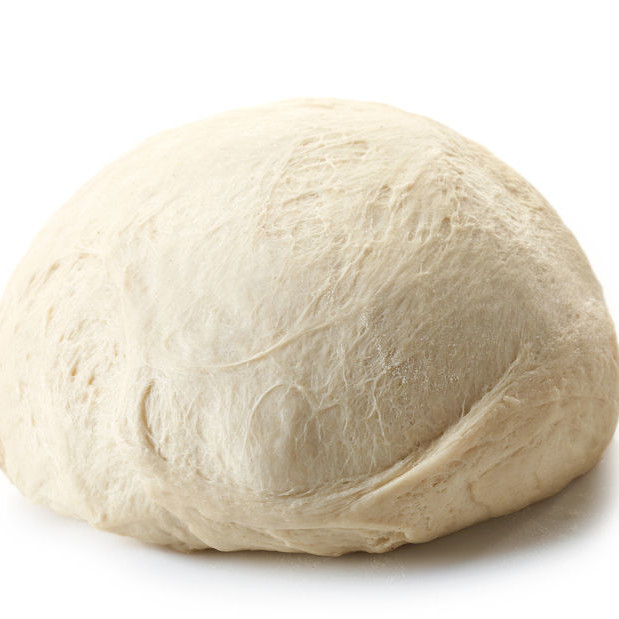Protease
What is Protease?
Protease is an enzyme that catalyzes the hydrolysis of proteins. It does this by breaking down peptide bonds between amino acids. This enzyme is used in bakery products as a dough conditioner. It modifies dough rheology and handling properties, improving:
- Workability
- Pliability
- Machinability
- The quality of the finished products
Origin
Protease is a natural biological catalyst. It can be extracted from cereals and fruits, such as papain or bromelain. Or, it comes from animal sources like chymosin or rennin from bovines.
Commercial Production
On the other hand, it can be more efficiently produced from food-grade microorganisms. Some examples are fungi (Aspergillus oryzae) or bacteria (Bacillus subtilis). This happens through industrial-scale fermentation and downstream processing.1
Function
Protease performs different functions in bread and cracker dough systems. They are classified by their action pattern:
Endoprotease: can split the protein interior chains at random linkages to form polypeptides, peptides and peptones. This results in a reduction of the molecular size of proteins which greatly impacts dough rheology. Endoprotease provides the following functions:2,3
- Through the breakdown of proteins, the gluten network is weakened. This enhances extensibility and decreases resistance to deformation. Protease-treated doughs are easier to round, sheet and mould.
- Reduce mixing energy and time in some breadmaking processes that use no-time or straight dough systems.
- Improve the sheetability of crackers and pizza doughs.
- Improve dough pan flow dough.
- Increase the bread crumb tenderness.
- Slightly increase dough stickiness. This is due to gluten breakdown and water redistribution among flour (starch, arabinoxylans and cellulose).
- Ease dough expansion during proofing and oven spring through enhanced extensibility. This has a positive impact on the finished product volume.
Exoprotease: can split off terminal amino acid residues from the main protein chain. In the presence of free reducing sugars, this may lead to enhanced crust color through Maillard browning reactions.2,3
Application
Protease is called a micro ingredient in baking. It is favored in breadmaking systems that don’t require fermentation steps such as yeast preferments or sourdough. The addition of specialty enzymes is how high-quality artisan and variety bread can be made in a short time.
Usually, protease is added during dough mixing. Depending on the application and formulation, levels are 0.1 to 0.5% based on flour weight. It is also used in clean label applications. There can be issues with purity, such as side reactions and secondary activity. Also, ensuring complete inactivation during baking is very important for optimal performance. When supplying protease, it is a good practice to conduct baking tests and lab analysis prior to line production.
Similar to other enzymes, protease requires special conditions for optimum activity and performance.
Special considerations:
- Acidity (pH) of food system: protease performs well within the pH range of 4.5–6.5.
- Temperature: chemical reaction rates double for every 18°F (10°C) increase in temperature.
- Contact time between enzyme and substrate: enzymes need time to act on the proteins.
- Water availability to support chemical reactions: water absorption or hydration levels greatly affect enzyme activity.
- Amount of substrate: the enzyme operates most efficiently when an excess of substrate is available. This is not a concern for bakers because flour containing gluten-forming proteins is the main ingredient.
- Enzyme amount or dosage: for example, 0.25% powder based on flour weight or as tablets at 75 HU (hemoglobin units) per 100 g flour. Excessive amounts of protease can compromise the gluten matrix and its structural integrity. As a result, the gas retention capacity of the dough is reduced.
The type of a protease can be critical to product quality due to reaction specificities with the gluten proteins, gliadin or glutenin. Some proteases favor cleaving bonds located at tryptophan, glutamine, proline, phenylalanine or leucine residues. The supplier should clearly state this information to help bakers select the most suitable protease for their end-application.2,3
FDA regulation
According to 21 CFR Part 184 (Direct Food Substances Affirmed as Generally Recognized as Safe), protease can be used in food in amounts sufficient amounts, with no limitation other than current good manufacturing practices.
References
- Mathewson, P.R. “Production, Storage, and Handling.” Enzymes, Eagan Press Handbook Series, AACC International, Inc., 1998, pp. 13–24.
- Van Oort, M. “Enzymes in Bread Making.” Enzymes in Food Technology, 2nd edition, Blackwell Publishing Ltd, 2010, pp. 103–143.
- Parkin, K.L. “Enzymes.” Fennema’s Food Chemistry, 5th edition, CRC Press, Taylor & Francis Group, LLC, 2017, pp. 357–412.


